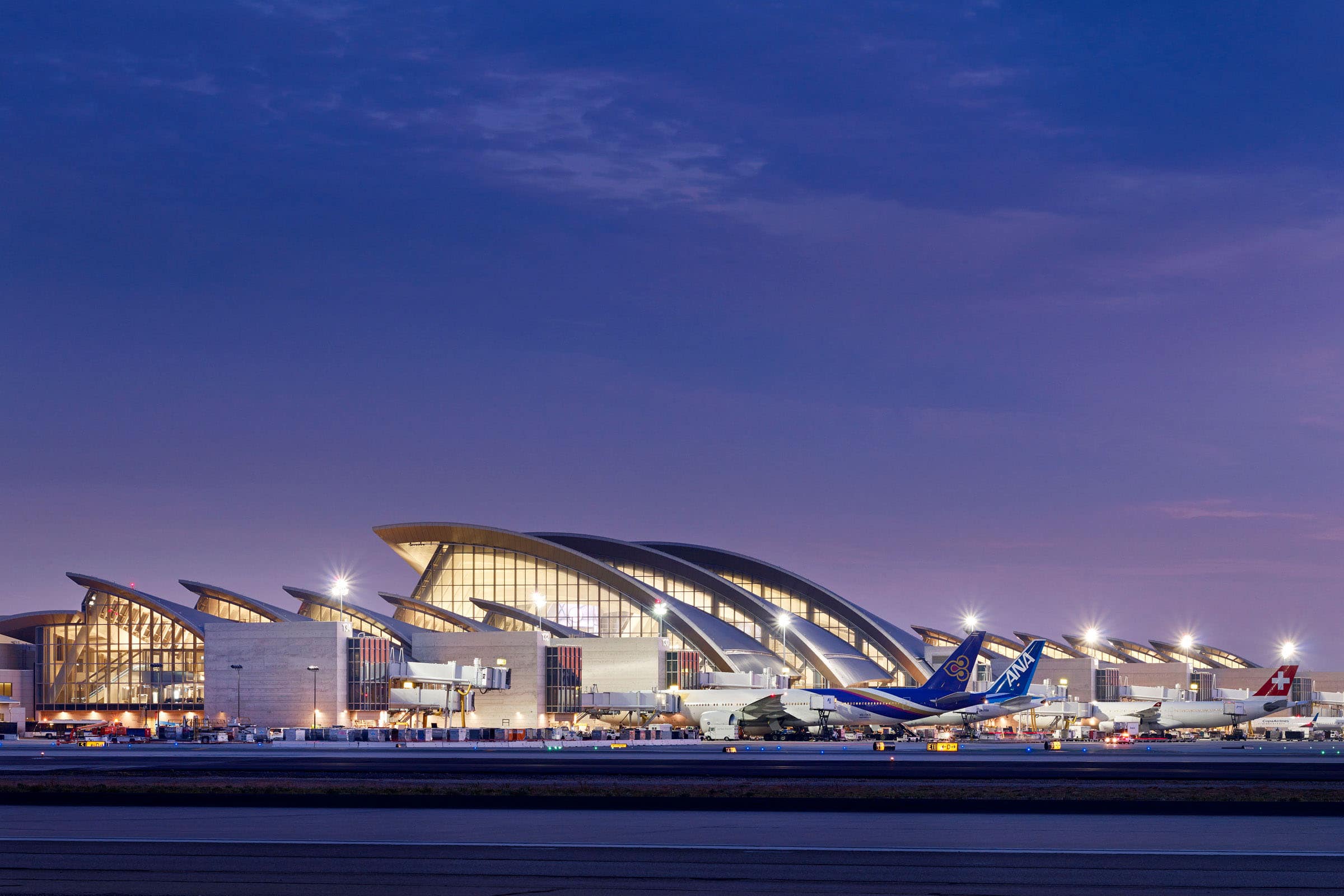Story at a glance:
- Strategies like daylighting improve sustainability and overall openness in airports.
- 80% of construction waste at the new Concourse D at Nashville International Airport was diverted from landfills.
- LaGuardia Airport’s design plan intends to reach 80% greenhouse gas reduction by 2050.
Sustainable airport design can be much more complex than creating a green office space or home. Factors like runway constraints, an urban environment, and millions of annual visitors make airport sustainability no easy feat.
Despite this, airports like Los Angeles International Airport and LaGuardia Airport are achieving LEED certification through the use of daylight systems, customized stainless steel roofs, stormwater management, and efficient plumbing fixtures—among other strategies.
On top of sustainability, customer comfort is also important to airport designers, especially considering how many people travel through these spaces. In 2019 an estimated 22 million passengers traveled through LaGuardia Airport.
See how these airports are not only designed for the environment, but also for new and seasoned travelers alike.
1. Terminal C at Orlando International Airport
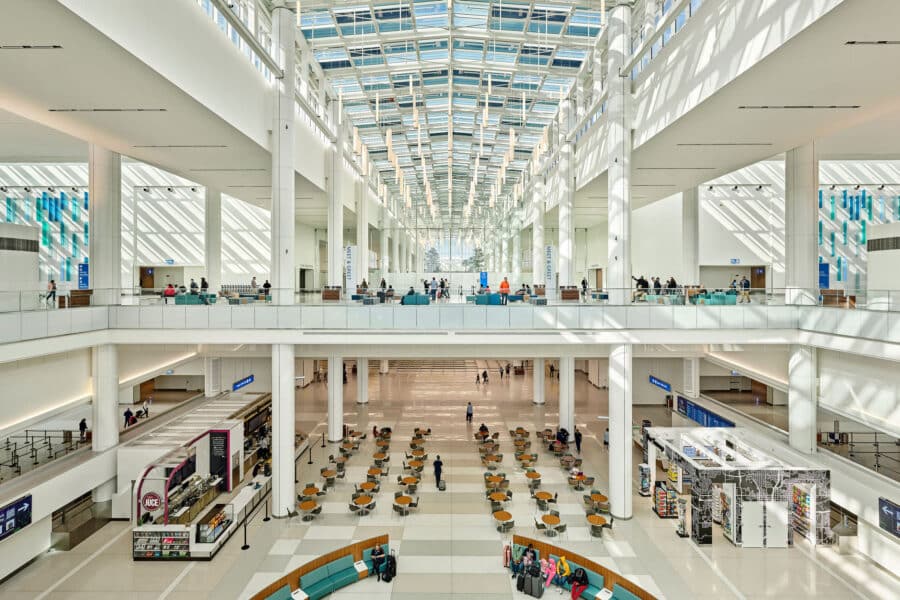
The Boulevard at Orlando International Airport Terminal C is characterized by its continuous skylight of varying blue frits that expresses the design themes of sky, water, and flora. This project also included a large application of raised access flooring to help with any future needs for the airport to adapt. Photo by Michael Robinson
Plentiful natural light, palm trees, and a wide open boulevard fill the new International Terminal C at Orlando International Airport (MCO). While daylighting and designing for a sense of place are key to everything Fentress Architects does, some surprising and exciting trends are happening in airport design, too, says Curtis Fentress, who founded the firm in 1980.
“Currently there is a massive amount of money available for infrastructure—and airports fall into that category,” Fentress says.
Many airports are in the process of upgrading their facilities, adding buildings or new gates or modernizing overall. “It seems like all the airports in the US are trying to upgrade their facilities. It’s an exciting time in the aviation industry,” he says.
2. Los Angeles International Airport
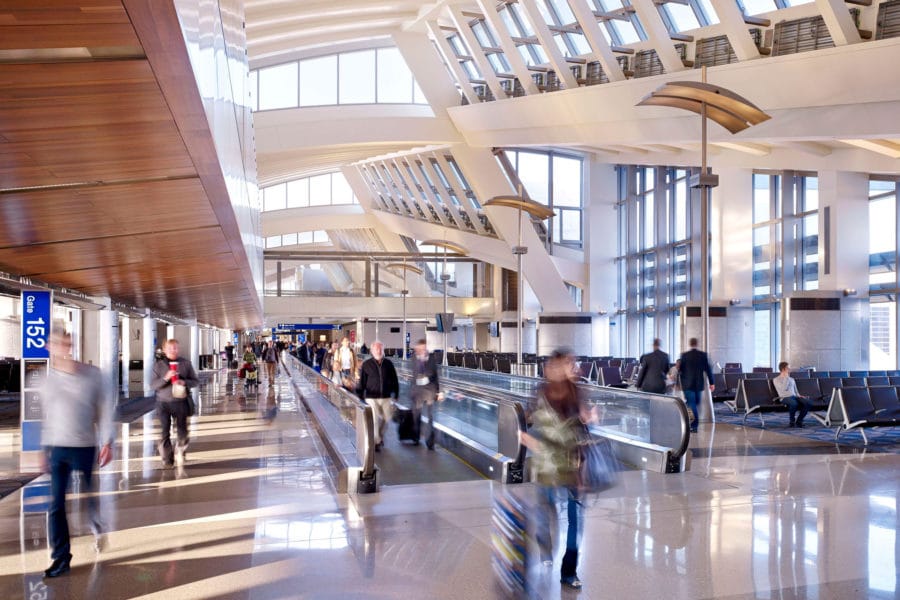
Inspired by the Pacific Ocean, the Tom Bradley International Terminal’s site-responsive roofline optimizes building performance by reducing solar glare and heat from the ocean from the west and bathes the terminal in natural light from the northeast. Photo by Nick Merrick
After 25 years without major upgrades, Fentress Architects designed the Tom Bradley International Terminal at LAX to be LEED Gold and people-centric. The $14 billion capital improvement program to redevelop the airport was launched in 2009.
Designers at Fentress Architects capitalized on Southern California’s abundant daylight to deploy multiple daylighting strategies. The strategy that stands out is the site-responsive, stainless steel roof that reduces solar glare and heat from the ocean from the West and bathes the terminal in natural light from the Northeast. Expansive glass curtain walls and clerestory windows flood the 150,000-square-foot space with light.
Fentress Architects undertook several environmental measures to achieve the building’s LEED Gold status. Some of these include the recycling and salvaging of more than 75% of construction and demolition waste, drought tolerant landscape planting, and HVAC controls that reset temperatures to maximum efficiency without sacrificing occupant comfort.
3. Nashville International Airport’s Concourse D
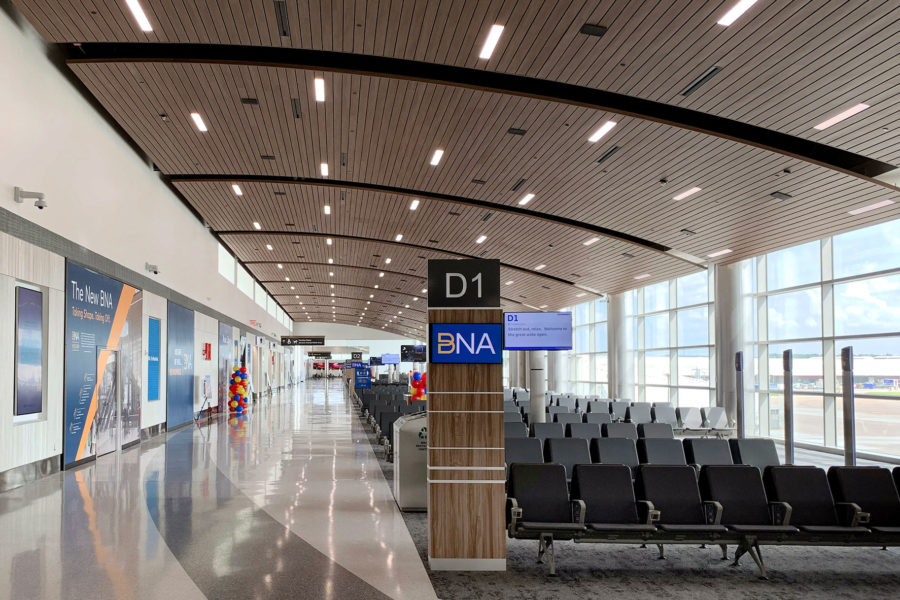
Fentress Architects completed the $292 million, 115,000-square-foot expansion of Concourse D in July 2020. Photo courtesy of Fentress Architects
The new Concourse D at Nashville International Airport (or BNA, as it is also known) recently achieved LEED v4 Silver certification—making it one of only five airport facilities in the US to earn the rigorous recognition.
“Energy conservation is a key element of not only our design approach, but our values as a firm. We are proud to have leveraged our expertise, along with the commitment of all partners involved in this significant project, to realize BNA’s forward-thinking sustainability standards,” Curtis Fentress, principal in charge of design at Fentress Architects, said in a previous gb&d article.
The project’s team incorporated many green design components that both optimizes building performance and passenger comfort. Light-colored building materials retain less heat and geothermal cooling reduces energy consumption and costs. Electrochromic glass blocks out excessive sunlight while reducing energy consumption. By the end of the project, 80% of construction waste was diverted from landfills.
4. Auckland International Airport, New Zealand
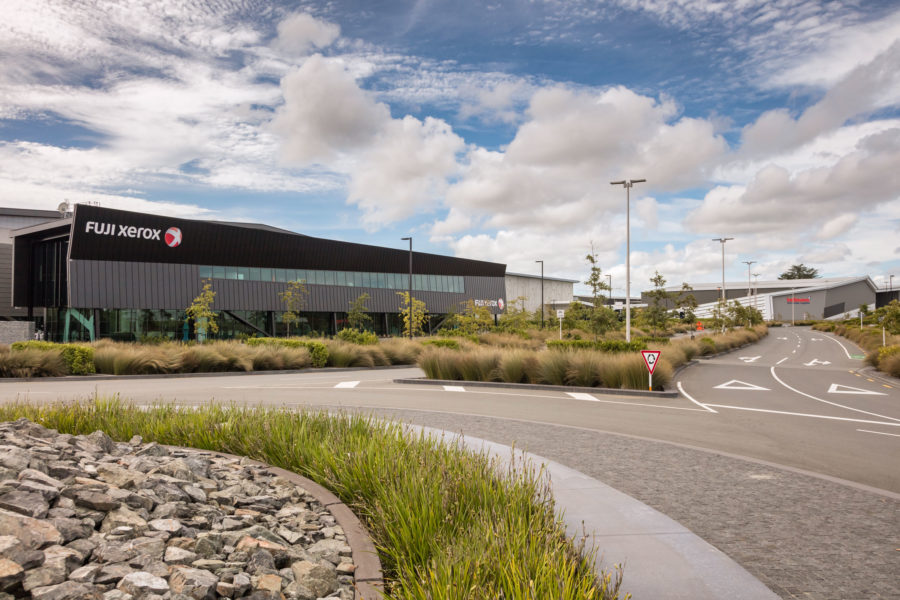
Runoff is channeled into rain gardens comprising drought-tolerant native grasses. Local volcanic rock was added to the concrete mix. Photo by Blake Marvin
New Zealand’s agricultural heritage is a cornerstone of the country’s history, so it only felt right for landscape architecture firm Surfacedesign to balance a proper runway expansion while keeping sustainable airport design in mind.
The Auckland International Airport (AKL) is situated on an ecologically sensitive waterfront. For sustainability and budgetary reasons, material reuse was a mandate. Other primary priorities were stormwater management, new roads, and local materials sourcing to minimize the project’s carbon footprint. Additionally, local design inspirations are abundant, with stylistic nods toward Maori natives and European immigrants.
All stormwater runoff is channelled into planned rain gardens along the sidewalks or into retention ponds.
Curves and roundabouts were sized with large delivery trucks in mind, and custom concrete for the curbs and pavers was created using local aggregates. Recycled volcanic rock was used in the mix to cost-effectively add a dark tint.
5. Seattle Tacoma International Airport
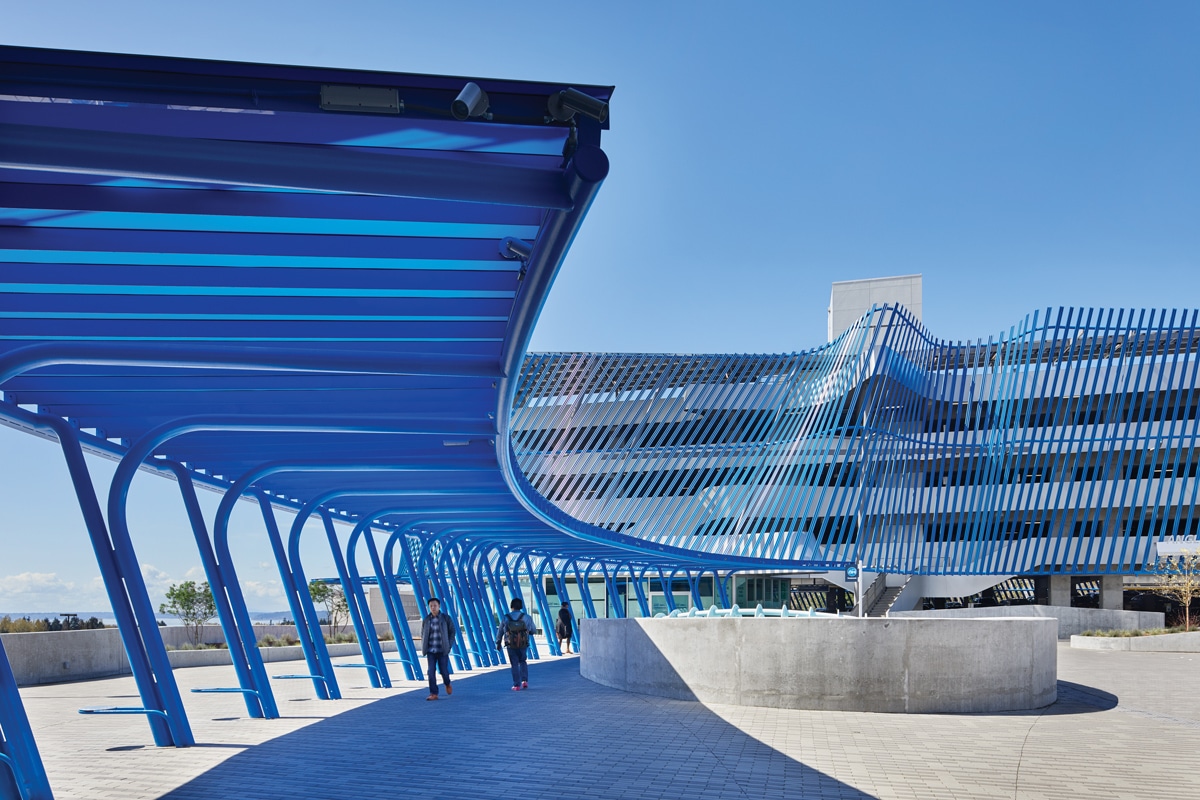
The recently completed Angle Lake Station is the first station south of Sea-Tac airport. The 400-square-foot complex is intended to be part of a greater extension that will continue southbound over the next decade. Photo by Benjamin Benschneider
HOK architectural team designed a 32,400-square-foot annex to the Seattle Tacoma International Airport. The six new terminal gates were expected to relieve peak airport congestion while highlighting the beauty of the Pacific Northwest. The project was expected to receive LEED Silver certification thanks to various sustainable design strategies—with just a couple being a daylighting system and the implementation of a hybrid timber and steel structure system. The team also added interior plants for aesthetic appeal and overall air quality.
The HOK design and structural engineer teams advanced the building’s superstructure from that of a typical airport to a hybrid timber and steel system. The timber is locally sourced from Douglas Fir trees in Washington and will reduce the building’s embodied carbon. The innovative design uses a glue-laminated (glulam) timber truss system that crosses over the roof of the building and connects to steel columns. “I wouldn’t call it the first of its kind, but it is the first installation of glue timber at an international airport in the United States,” Sean Quinn, HOK’s regional sustainable design leader, previously told gb&d.
More recently, a Sea-Tac C Concourse design has been centered around light, air, and nature. The C Concourse Expansion, designed by Miller Hull and Woods Bagot, will bring much-needed light and air to one of the busiest crossroads in the terminal. The project is expected to be complete in May 2026—before the World Cup comes to Seattle in June. The start of structural steel delivery, to add four new floors to the existing three-story building, began in fall 2024.
6. LaGuardia Airport, Queens, NY

LaGuardia Airport’s New Terminal B is designed to achieve at least LEED Silver certification. Rendering courtesy of HOK and WSP
In December 2018 LaGuardia Airport opened the first 11 gates in its new Terminal B concourse, which is expected to achieve a minimum of LEED Silver certification, and possibly v4 distinction.
“Sustainable design strategies focus on ensuring optimal building orientation, providing flexibility for change, using natural and locally sourced materials, and making the terminal resilient to major storm events by placing critical systems above flood levels,” Robert Chicas, director of aviation and transportation at HOK, previously said to gb&d.
The design plan intends to reach 80% greenhouse gas reduction by 2050. A new baggage handling system that has magnetic motors is anticipated to save at least 37% of energy compared to traditional baggage carousels, and new EPA plumbing fixtures will achieve a 42% reduction in potable water use.
Laura Rote contributed to this article.

